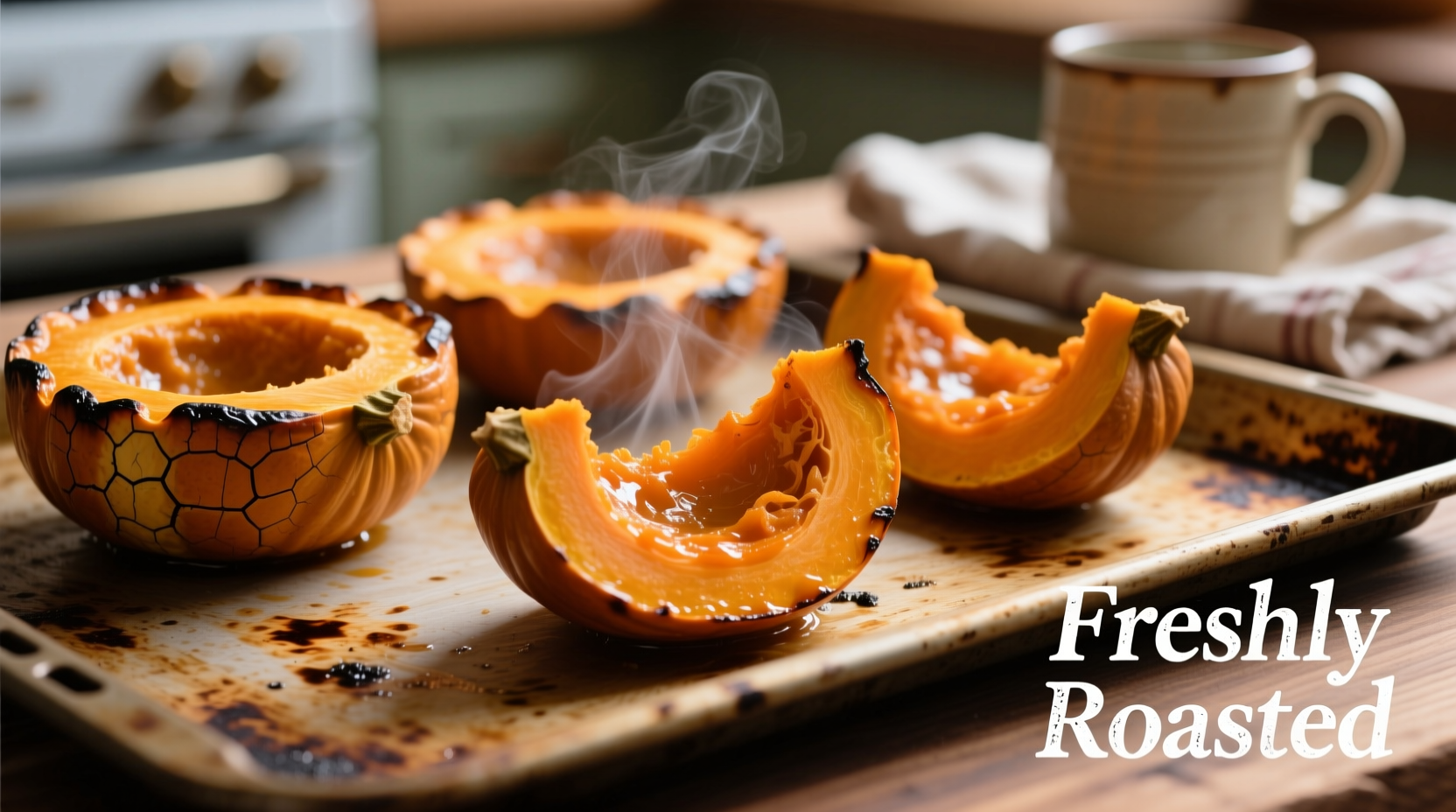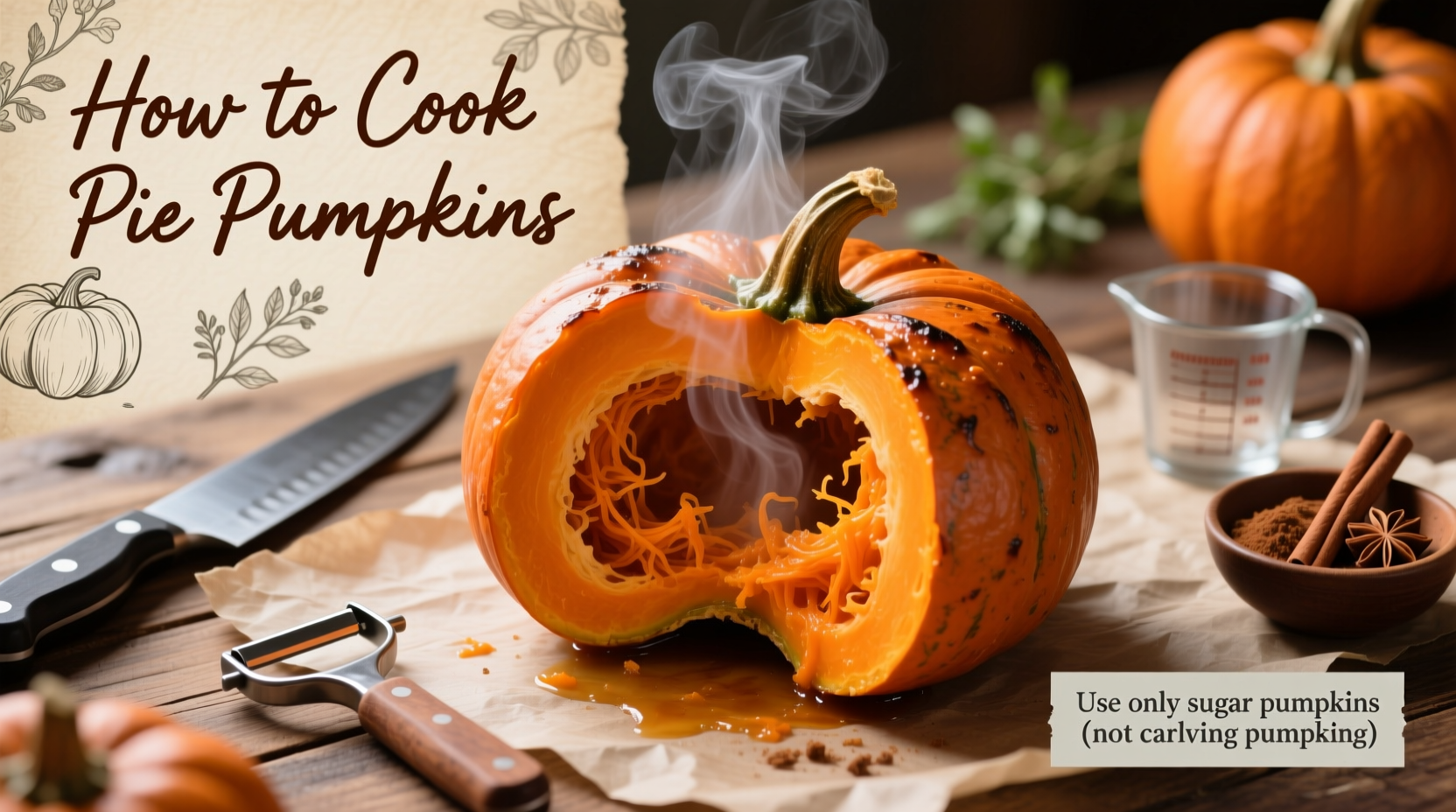When you're holding a small, dense pie pumpkin and wondering how to transform it into that velvety puree for your holiday pie, you need clear, reliable instructions. Unlike carving pumpkins, pie pumpkins (Cucurbita pepo varieties like Sugar Pie or Baby Bear) contain less water and more concentrated sweetness, making them ideal for baking. The key to perfect pumpkin puree lies in proper preparation and cooking technique—roasting enhances natural sweetness while boiling risks waterlogged results. This comprehensive guide walks you through selecting quality pumpkins, three cooking methods with exact timing, and professional tips for achieving restaurant-quality texture every time.
Understanding Pie Pumpkins vs. Carving Pumpkins
Many home cooks mistakenly use large carving pumpkins for baking, resulting in watery, bland pies. Pie pumpkins (also called sugar pumpkins) are smaller, denser, and sweeter than their jack-o'-lantern counterparts. Understanding these differences prevents disappointing results.
| Characteristic | Pie Pumpkins | Carving Pumpkins |
|---|---|---|
| Size & Weight | 4-8 inches diameter, 2-5 lbs | 10-20+ inches, 10-30+ lbs |
| Flesh Texture | Dense, fine-grained | Fibrous, stringy |
| Water Content | Lower (65-70%) | Higher (85-90%) |
| Sweetness Level | Naturally sweeter | Milder, less complex flavor |
| Best Uses | Baking, soups, purees | Carving, decoration |
According to USDA agricultural specialists, pie pumpkin varieties contain approximately 20% less water and 30% more natural sugars than standard carving pumpkins, directly impacting final dish texture and flavor concentration (USDA Agricultural Research Service).
Selecting Quality Pie Pumpkins
Choose pumpkins that feel heavy for their size with firm, uniformly colored skin. Avoid those with soft spots, cuts, or mold. The stem should be intact and dry—never carry pumpkins by the stem as it can break off. Look for varieties specifically labeled "sugar" or "pie" pumpkins at farmers' markets or grocery stores. Sugar Pie, Baby Bear, and Cinderella are excellent choices known for their rich flavor and smooth texture when cooked.
Preparing Pie Pumpkins for Cooking
Proper preparation ensures even cooking and easy puree extraction:
- Wash the pumpkin thoroughly under cool water to remove dirt
- Cut horizontally across the middle with a sharp chef's knife
- Scoop out seeds and stringy pulp with a sturdy spoon
- Remove any remaining fibers with a clean kitchen towel
- Peel if boiling or steaming; leave skin on for roasting
Professional chefs recommend chilling pumpkins in the refrigerator for 30 minutes before cutting—this firms the flesh and makes slicing safer. Never microwave whole pumpkins as they can explode from built-up steam pressure.
Three Cooking Methods Compared
Each cooking technique affects flavor and texture differently. Understanding these scenarios helps you choose the best method for your needs:
Roasting (Recommended Method)
Roasting concentrates flavors and removes excess moisture naturally. Preheat oven to 375°F (190°C). Place pumpkin halves cut-side down on a parchment-lined baking sheet. Roast 45-60 minutes until a knife inserts easily into the flesh. Cool slightly, then scoop out cooked pumpkin and puree in a food processor.
Boiling
Boiling works quickly but risks waterlogged results. Peel and cube pumpkin into 1-inch pieces. Place in a pot with enough water to cover. Bring to a boil, then reduce heat and simmer 15-20 minutes until tender. Drain thoroughly in a fine-mesh sieve, pressing with the back of a spoon to remove excess water.
Steaming
Steaming preserves nutrients better than boiling. Place cubed, peeled pumpkin in a steamer basket over 1 inch of simmering water. Cover and steam 20-25 minutes until fork-tender. Drain well and pat dry with paper towels before pureeing.
Food science research from the University of Illinois Extension shows that roasting pie pumpkins at 375°F for 50 minutes reduces water content by 18% compared to boiling, resulting in significantly thicker puree that requires less reduction time (University of Illinois Extension).
Making Perfect Pumpkin Puree
After cooking, achieving smooth puree requires proper technique:
- Always use a food processor or high-powered blender—mashers leave fibrous bits
- Pulse in short bursts to avoid overheating the motor
- For ultra-smooth texture, pass through a fine-mesh sieve
- Store excess puree in airtight containers with 1/4 inch headspace
For pie making, professional bakers recommend reducing puree further by spreading it on a clean kitchen towel and gently squeezing out excess moisture until it reaches the consistency of canned pumpkin.

Storage and Usage Tips
Proper storage maintains quality and prevents waste:
- Refrigerate cooked pumpkin puree in airtight containers for up to 5 days
- Freeze in 1-cup portions for up to 12 months (thaw in refrigerator)
- Never store pumpkin with the skin on—this promotes faster spoilage
- Label containers with date and quantity for easy recipe planning
Creative Uses Beyond Pie
Don't limit your pie pumpkin to just holiday desserts. Try these professional applications:
- Swirl into oatmeal or yogurt for breakfast
- Blend into smoothies for added nutrients
- Make pumpkin hummus with chickpeas and tahini
- Create savory pumpkin risotto with sage and Parmesan
- Develop pumpkin pasta sauce with roasted garlic
Chef instructors at culinary schools emphasize that properly cooked pie pumpkin puree enhances both sweet and savory dishes with its natural sweetness and velvety texture, making it a versatile ingredient year-round.











 浙公网安备
33010002000092号
浙公网安备
33010002000092号 浙B2-20120091-4
浙B2-20120091-4